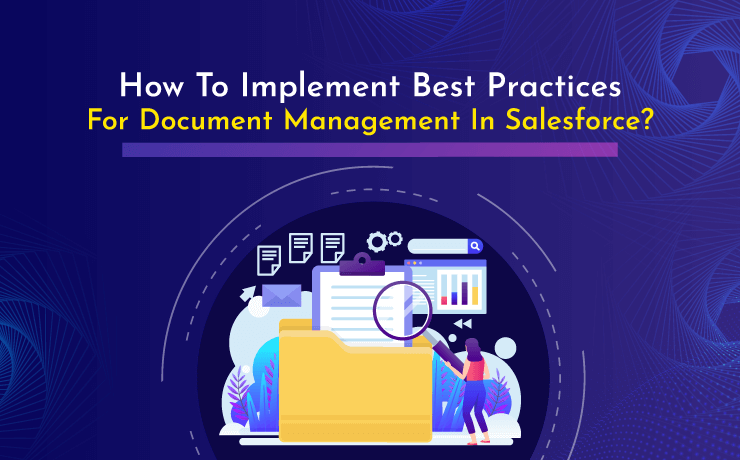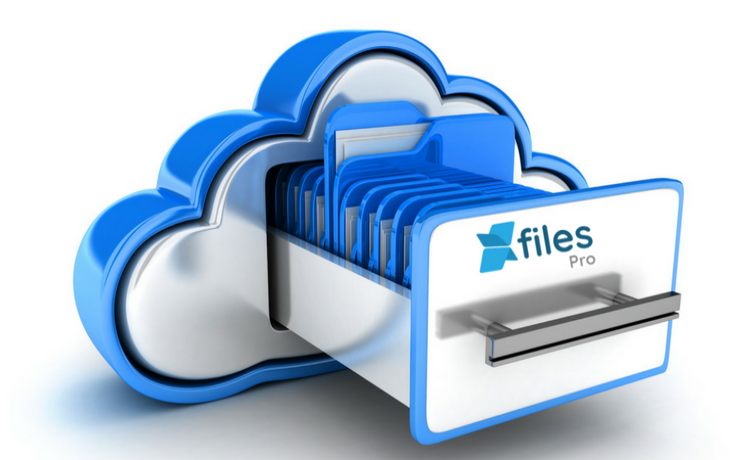
Documents are at the heart of any business process. These are the records that define the future and progress. Therefore, efficient document management in Salesforce is critical to ensure smooth operation and improve your business continuity.
As a result, it’s ideal to implement document management best practices that play a pivotal role in ensuring intelligent organization, easy accessibility, and strong security of the documents. Despite the fact that most people are well aware of its benefits, many still wonder: what are the best practices to manage documents effectively within Salesforce?
If you’re thinking in the same line, let’s discover the most proven methods in this article that you need to practice in your daily operations.
#1. Safeguard Salesforce From Growing Document Volume
As business communications progress, it’s expected that your documents will also grow in high volumes inside Salesforce. However, the limited file storage space of Salesforce shouldn’t exceed its capacity due to document overgrowth. To keep the Salesforce file storage unaffected by the mounting of documents, many admins get their hands on a solution that can migrate files and attachments from the CRM application to a secure external system.
After the migration process, the users will be able to manage those documents in the external storage with complete access while the Salesforce storage space is constantly freed up. This is one of the proven best practices for document management in Salesforce, which helps you to optimize the storage space and safely keep the performance of the CRM application.
#2. Set Up Complete Automation
Process automation is key if you’re on your way to modernize your business. Traditional/manual procedures slow down your workflows needlessly, which will ultimately have an impact on the business’s success. Automating everyday document management operations such as document generation and document transfer is one of the best ways to keep employees away from some of the most time-consuming tasks. Automation ensures that pre-defined document management procedures will happen in each step of the process — from the generation of the document to its storage and external collaboration. This makes your Admins’ lives easier and helps you maintain consistency in document management within Salesforce.
#3. Create Folder Structure for Salesforce Documents
Scattered documents are the house of chaos, confusion, and inefficiency in any organization. Unfortunately, this is the reality within Salesforce. Since Salesforce doesn’t provide the capability to build folder structures inside the CRM to arrange documents, all the critical files stay scattered, making it difficult to get our hands on them easily. Having a well-organized folder structure offers a systematic way to navigate, categorize, and access documents seamlessly. Moreover, it fosters collaboration among team members, positioning them for improved navigation within this repository in the future.
#4. Define Access Control
In many organizations, the security of Salesforce documents is still overlooked. In fact, most of your documents, whether it’s contracts, quotes, or invoices contain sensitive information. You can’t expose the information regarding your customer or even how your business operates to unauthorized users. Effective document management adopts solutions that provide functionalities like Access Control that keep the documents safe. Access Control helps you verify who has the right to see, access, modify, or delete a Salesforce document. This is a great way to ensure that only authorized team members/departments can use a document.
#5. Ensuring Document Retention
Businesses of all sizes usually struggle with the issue of storing documents for a longer period of time considering the limited file storage space Salesforce provides. Holding documents that have exceeded the maturity date or are irrelevant is like a liability for your business. This happens mostly due to the unawareness of the regulatory demands that many industries insist on. Industries like healthcare and legal demand the retention of documents for a longer time period and the deletion of them causes hefty penalties and loss of reputation. To avoid such scenarios, you should have a document management strategy in place that preserves your files without impacting the storage limit.
#6. Real-time Collaboration for Users
A successful business workflow is all about how employees collaborate with each other. When the documents are managed within Salesforce, you need to make sure your team members can work on a document simultaneously. That means they should be able to instantly get to know the modifications made by a user on a document in order to foster a real-time collaborative experience. This is one of the best document management practices in Salesforce that you need to consider adopting for the smooth and highly productive operation of your business.
#7. Invest in a Document Management Solution
The only way to accomplish document management best practices in Salesforce is to embrace an advanced, fully-fledged solution. We recommend you give a shot to XfilesPro, the very popular document management solution that can check off every above requirement with efficiency.
From automated document generation to storing documents in your external systems and enabling seamless collaboration for team members, XfilesPro advances and streamlines your entire document management processes within Salesforce. With XfilesPro, you can rest assured that your documents are safe from unauthorized access and are retained for many years ahead.
To learn more about XfilesPro, connect with our product experts.

Deeshna is a five-year experienced writer in the field of B2B, writing a wide range of content types that drive the success of SaaS products.
